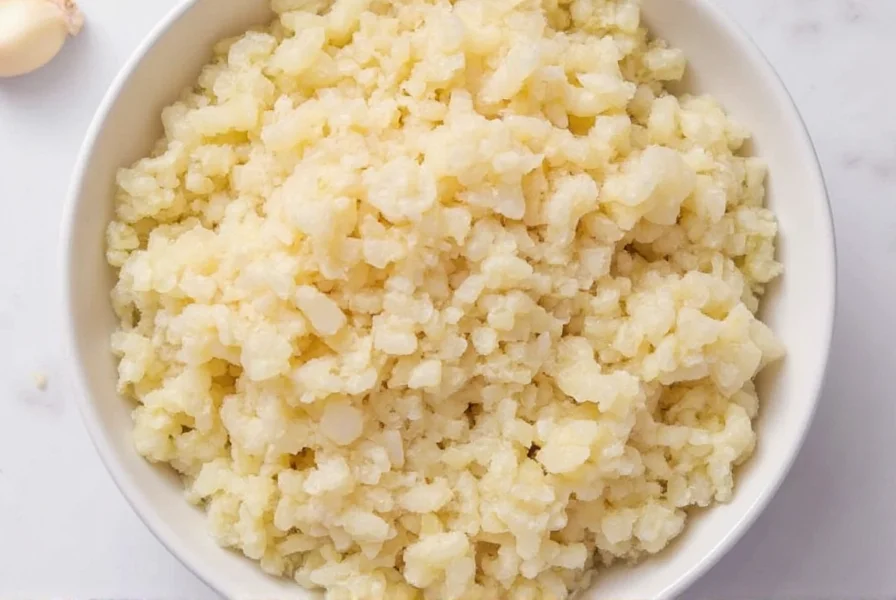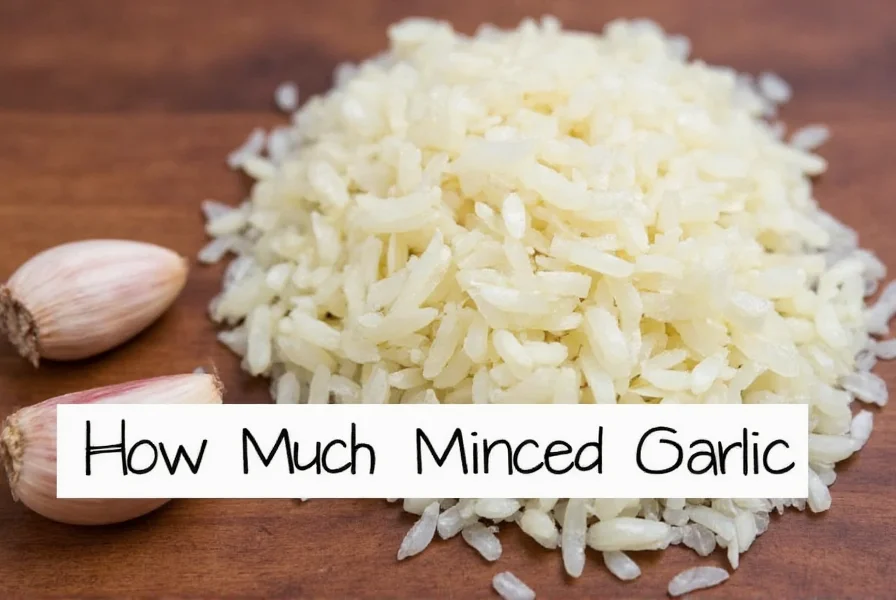Understanding garlic measurements is essential for achieving perfect flavor balance in your cooking. Whether you're following a recipe that calls for cloves but you have pre-minced garlic, or vice versa, knowing the exact conversion prevents under- or over-seasoning your dishes.
Garlic Measurement Fundamentals
Garlic measurements aren't always straightforward due to natural variations in clove size. While the standard conversion is 1 garlic clove = 1/2 teaspoon minced garlic, several factors affect this ratio:
- Clove size: Small cloves may yield only 1/4 teaspoon, while large cloves can produce up to 3/4 teaspoon
- Freshness: Older, drier cloves contain less moisture and may yield slightly less volume
- Mincing technique: Hand-minced versus food processor minced affects density and air content
- Packing: How tightly you pack the minced garlic into your measuring spoon
| Number of Cloves | Minced Garlic (Teaspoons) | Minced Garlic (Tablespoons) |
|---|---|---|
| 1 | 1/2 tsp | 1/6 tbsp |
| 2 | 1 tsp | 1/3 tbsp |
| 3 | 1 1/2 tsp | 1/2 tbsp |
| 4 | 2 tsp | 2/3 tbsp |
| 6 | 3 tsp (1 tbsp) | 1 tbsp |
| 12 | 6 tsp (2 tbsp) | 2 tbsp |
Practical Measurement Techniques
For the most accurate results when converting between whole cloves and minced garlic:
- Hand-mincing method: After peeling, slice the clove thinly, then rock your knife back and forth until finely minced. Level off your teaspoon measure without packing
- Pre-minced garlic: Commercial minced garlic often contains preservatives that affect volume. Use 1/2 teaspoon jarred minced garlic per clove, but taste as you go
- Garlic paste: When using concentrated garlic paste, reduce the amount to 1/4 teaspoon per clove due to its higher density
- Adjusting for recipe type: For delicate dishes like fish or sauces, use the lower end of the measurement range. For robust dishes like stews or roasted meats, you can use the higher end

When Precision Matters Most
Certain recipes require exact garlic measurements to achieve the proper flavor profile. In baking, sauces, dressings, and delicate seafood dishes, even small variations can significantly impact the final result. For these applications, consider these professional tips:
- Use a kitchen scale for critical recipes: 1 average garlic clove weighs approximately 3-7 grams
- For emulsified sauces, mince garlic extremely fine or use a garlic press for even distribution
- When substituting jarred minced garlic for fresh, reduce the amount by 25% as preservatives can intensify flavor
- Always add garlic gradually and taste as you cook, especially when working with unfamiliar garlic varieties
Storage Considerations for Accurate Measurements
Garlic's moisture content changes over time, affecting volume measurements. Freshly harvested garlic contains more moisture than stored garlic, which can dry out and shrink. This means:
- Freshly picked garlic: 1 clove = approximately 5/8 teaspoon minced
- Garlic stored 1-3 months: 1 clove = approximately 1/2 teaspoon minced (standard conversion)
- Garlic stored longer than 3 months: 1 clove = approximately 3/8 teaspoon minced
For consistent results in your cooking, use garlic that's been stored properly in a cool, dark place with good air circulation. Avoid refrigeration, which can cause sprouting and texture changes that affect measurements.

Common Substitution Scenarios
Understanding garlic conversions helps when adapting recipes or working with what's available. Here are practical substitution guidelines for various cooking situations:
- From fresh to jarred: Use 1/2 teaspoon jarred minced garlic per fresh clove, but reduce by 1/8 teaspoon if the recipe already includes salt
- From powder to fresh: 1/8 teaspoon garlic powder equals one fresh clove (note: powder has more concentrated flavor)
- From granulated to fresh: 1/4 teaspoon granulated garlic equals one fresh clove
- For roasted garlic: 1 roasted garlic clove equals approximately 1 teaspoon minced raw garlic in terms of flavor intensity
Remember that cooking method affects garlic's potency. Raw garlic has the strongest flavor, while roasted or sautéed garlic becomes milder and sweeter. When substituting, consider both the measurement and the preparation method.
Professional Chef Insights
Experienced chefs emphasize that garlic measurement isn't just about volume—it's about flavor integration. Chef Marco Rodriguez, with 25 years in professional kitchens, explains: "The real question isn't just how much minced garlic equals one clove, but how that garlic will behave in your specific dish. A clove minced fine will distribute flavor more evenly than roughly chopped, potentially requiring less quantity. Always consider your dish's cooking time, temperature, and other ingredients when determining garlic amounts."
This perspective highlights why precise measurements serve as starting points rather than absolute rules. Developing your palate through practice remains the most valuable skill for perfect seasoning.
Frequently Asked Questions
How much jarred minced garlic equals one fresh garlic clove?
One fresh garlic clove equals approximately 1/2 teaspoon of jarred minced garlic. However, because jarred garlic often contains preservatives that intensify flavor, you may want to start with 3/8 teaspoon and adjust to taste, especially in delicate dishes.
Does the size of the garlic clove affect the minced measurement?
Yes, clove size significantly affects the measurement. Small cloves (about 1/2 inch) yield approximately 1/4 teaspoon minced, medium cloves (1 inch) yield 1/2 teaspoon, and large cloves (1 1/4 inches or more) can yield up to 3/4 teaspoon. Always consider your specific garlic's size when measuring.
Can I substitute garlic powder for fresh minced garlic in recipes?
Yes, you can substitute garlic powder for fresh minced garlic using a 1:3 ratio—1/8 teaspoon garlic powder equals one fresh garlic clove (1/2 teaspoon minced). Remember that garlic powder has a more concentrated flavor and lacks the moisture of fresh garlic, so you may need to adjust liquid content in some recipes.
Why does my minced garlic measurement seem different from recipe instructions?
Several factors cause measurement variations: garlic variety, freshness, storage conditions, and mincing technique all affect volume. Older garlic dries out and yields less, while freshly harvested garlic contains more moisture. The way you pack the minced garlic into your measuring spoon also impacts the final amount. Always taste and adjust as you cook for best results.
How should I adjust garlic measurements for roasted versus raw applications?
Roasted garlic has a milder, sweeter flavor than raw, so you'll need more volume to achieve similar flavor intensity. As a general rule, use 1 teaspoon of roasted minced garlic to replace 1/2 teaspoon of raw minced garlic (one clove). When substituting raw for roasted, start with half the amount and increase to taste.










 浙公网安备
33010002000092号
浙公网安备
33010002000092号 浙B2-20120091-4
浙B2-20120091-4